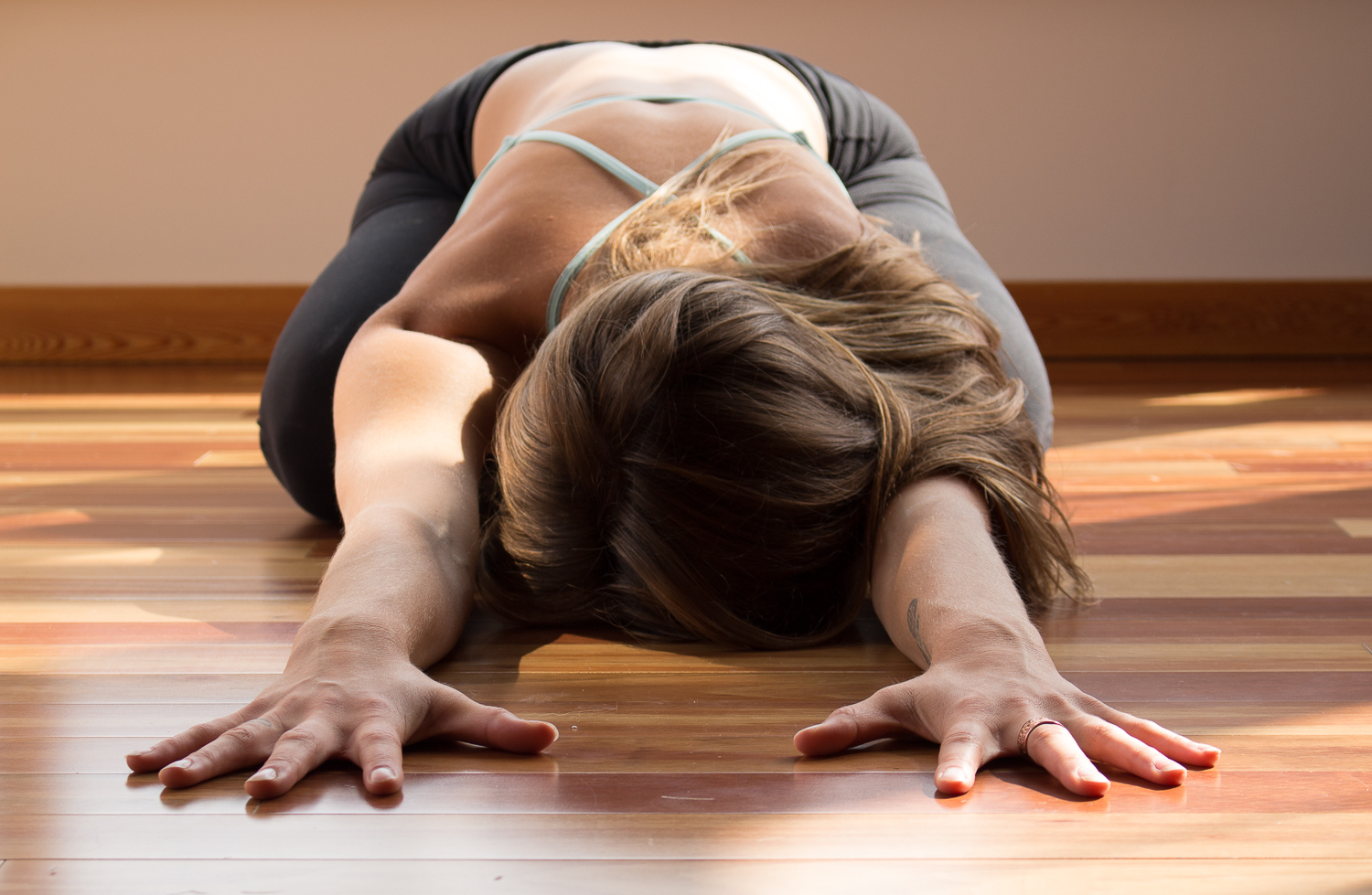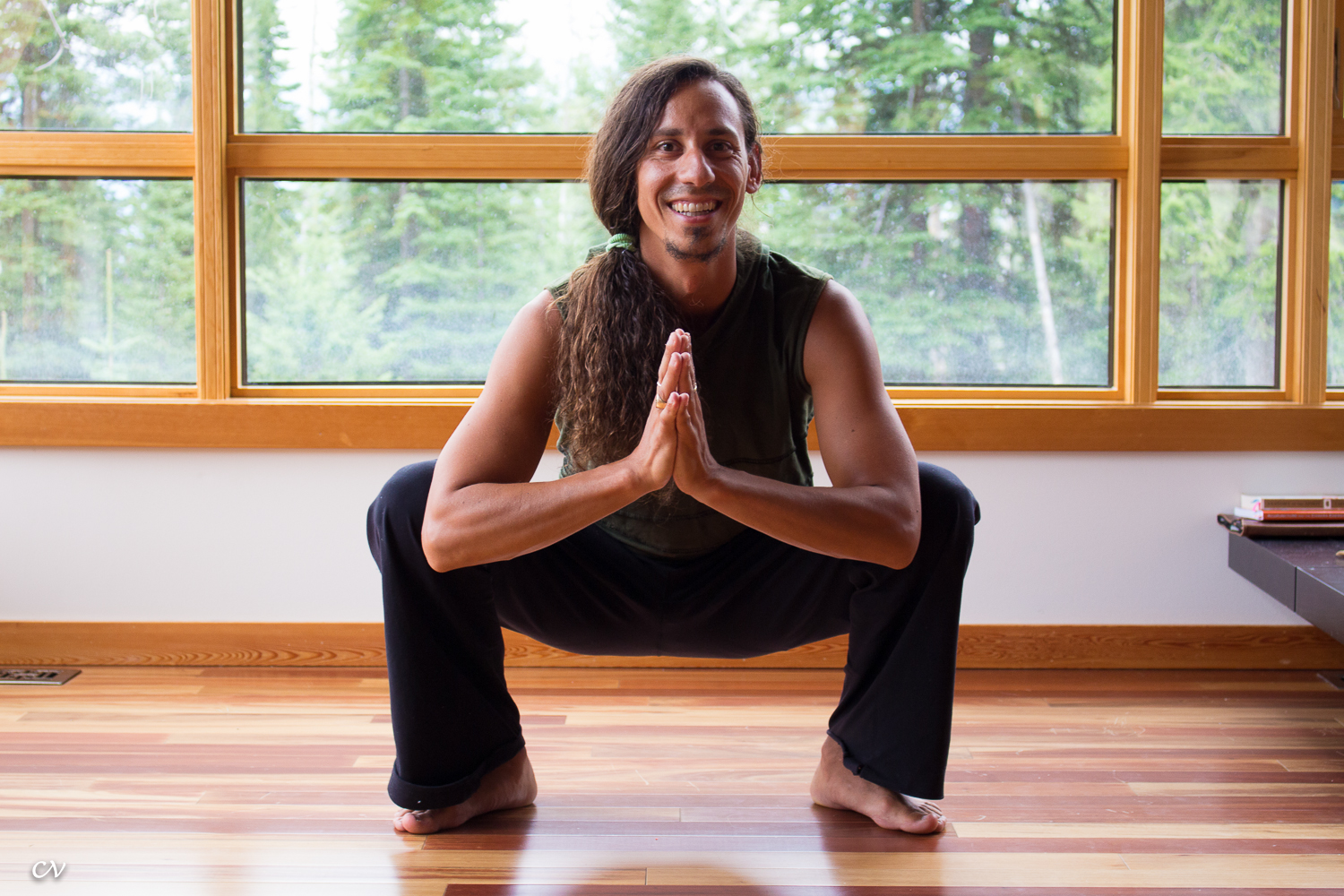Body Talk
Body Talk: Are You Listening?
Self study happens on many levels. Each cell in our body shares our human experience; love resonates in our every fibre, as does shame, guilt, fear and anger. You may hear the hips referred to as the "emotional junk drawer of the body" or notice that certain parts of your body ache more with certain stresses. Humans store emotional experiences in their bodies and a yoga practice is a way to not only study these imprints, but to release them.
Alanna Kaivalya at MindBodyGreen shares the following:
"What we hold in our bodies as tightness translates into what we hold in our bodies as energetic stress and tension. For example, most of us recognize that someone with a hunched upper back has more than just shoulder and chest tightness, they also may have depression, sadness or fear. Other portions of the body store specific kinds of energetic tension that are exhibited as tightness and inflexibility.
Energetically speaking, our hips are where we store the emotional stress caused by a lack of creativity, difficult intimate relationships and the coinciding emotional roller-coasters. The hips are the energetic location of the second chakra, which is ruled by emotions, creativity and intimacy. Life stressors in these areas become lodged in the hips, resulting in difficulty opening up - both literally and metaphorically."
If you're looking to deepen the way you release in your yoga practice, we have the perfect offering coming up on November 22 at Yogalife Studios South.
Yin, Partner Massage & Self-Healing with Sara Cueva
Join Sara Cueva for a three hour workshop designed to educate you on the various methods to incorporate a more well rounded approach to your existing yoga practice. This workshop will include a short discussion on the relevance of, and importance of exploring, fascial release. Sara will guide you through the various techniques used to incorporate instrument assisted fascial release into your body to ensure the proper flow of nutrients within, followed by techniques for partner yoga massage, and will complete this nourishing journey with a yin practice to focus on the connective tissue of the body. This workshop will involve hands on work, so come with a friend, partner, or spouse, OR ensure you are comfortable touching and being touched by someone you may not know. This workshop is open to all levels (no prior yoga experience is required).
Foundation Friday: Balasana
This post is yet another instalment in a series that delves into the basics of yoga—looking at its postures (asana), breath (pranayama), philosophy, and all the other essentials—giving you the foundations upon which to build a solid practice. Today's posture is another great addition to our Grounding Series.
Foundation Friday: Balasana
Pose, or Asana Child's Pose bah-lah-sah-nah
Mmm. Child's Pose.
Don't you just love it when your teacher says those words, offering you the chance to retreat inside, to turn inwards, to shut off all external noise and simply breathe? Child's pose, or Balasana, is frequently offered as a break within sequences, a time to re-establish steady breath, calm the heart rate, or return to intention if we've gravitated away from what we've set out to do.
Why is child's pose so grounding and calming?
- First of all, the shape of the spine in a child's pose mimics the shape of the spine in a fetal position—and our time in utero was, for most of us, the most stress-free, comforting, and grounded environment we've ever known. It's a gentle reminder to our bodies, and then our minds, to return to that calm, quiet state.
- Secondly, all forward folds are—in their physical nature—calming and quieting as our bodies are literally turning in towards themselves. The anatomical action of folding our bellies, chests, and faces into our legs—or in this case, the floor—seals us away from whatever is going on externally so we can only look at ourselves.
- Further, the action of resting the forehead down on something (the earth, stacked fists, a block) gently stimulates the vagus nerve. The vagus nerve helps to regulate the parasympathetic nervous system (the part that allows us to rest and relax), and in doing so it naturally lowers our heart rate, blood pressure, lessens tension and the stress hormone cortisol. That's why child's pose is also an excellent bed-time posture!
Balasana may help…
- Opens through your hips, thighs, and ankles
- Open the shoulders (especially in the traditional variation)
- Calm anxiety, soothe stress, and relieve fatigue
- Help move your nervous system into a more relaxed state
So, how do I get there?
- From Downward Facing Dog, lower your knees down, about mat-distance apart.
- Touch your toes together, and rest your seat back on your heels.
- Fold your torso forward. Let your belly rest in between your thighs.
- Extend your arms forward, palms facing down.
- Find someplace for your forehead to rest—if the ground is not available, you can use a block, a folded blanket, or even stack your palms or your fists.
- Breathe.
We hope this helps you better understand balasana, or child's pose. Please feel free to comment on our Facebook with any further questions. And let us know if you have something you would like to see featured in Foundation Friday!
Foundation Friday: Malasana
This post is an instalment in a series that delves into the basics of yoga—looking at its postures (asana), breath (pranayama), philosophy, and all the other essentials—giving you the foundations upon which to build a solid practice. Today's focus will be on Malasana, or Garland Pose.
Foundation Friday: Malasana
Pose, or Asana Garland Pose, or "Yogi Squat" mah-lah-sah-nah
In conjunction with our monthly theme, Malasana is one of the ultimate grounding yoga postures. The rooting through the feet, the closeness of the pelvis to the earth, and the general feeling of heaviness and surrendering to the weight of gravity in this posture all encourage a downward flow of energy. Malasana's energetic qualities are calming, soothing, and quieting for the busy mind, as this asana activates a flow of prana down through the body, towards the ultimate source of grounding—the earth.
Many Eastern cultures are accustomed to sitting on the floor for meals and meetings, or squatting comfortably as they go about their daily activities— whereas In our Western world, we spend so much of our lives seated in chairs, car seats, or on couches. We lose the softness and suppleness of our hips, calves, and ankles, and the strength of our low back, thighs, and core. Physically and energetically, malasana helps to counteract these losses.
Malasana may help…
- Tone your thighs, glutes, and calves
- Strengthen your low back and abdominal muscles
- Open through your hips and inner thighs
- Aid in digestion and elimination
- Soothe anxiety and promote calm
So, how do I get there?
- Start standing with your feet about mat-distance apart. Turn your toes slightly outwards.
- Lower your hips in between your legs. Keep your heels on the floor if you can, or support them with a folded mat or towel. You might even try this posture with a prop—like a block, or bolster under your seat.
- Draw your hands into anjali mudra (prayer position) and slide your shoulders back. Press your outer elbows into your inner thighs, and vice versa. If this is too much, keep both of your hands on the floor in front of you for support.
- Lengthen your tailbone down towards the earth—like gravity is pulling it lower—but lengthen the crown of your head higher to elongate your spine.
- Broaden the front of your chest.
We hope this helps you better malasana, or garland pose. Please feel free to comment on our Facebook with any further questions. And let us know if you have something you would like to see featured in Foundation Friday!
Categories
- Recipe 11
- Wellness 241
- Zen Habits & Inspiration 100
- Injury Prevention & Health 30
- Classes 1
- Yogalife Classes 7
- Prop Specific 1
- Studio Information 17
- Foundation Friday 25
- Physical Health 3
- Yoga Specific 54
- Curated Playlists 2
- Karma Program 5
- Staff Adventures & Journeys 10
- Anatomy & Information 30
- Community Event 15
- YEG Highlight 8
- Instructor Stories 22
- Yogi of the Month 13
- What's Going On 35
- Yogalife Workshops, Retreats & Trainings 37
- Relaxation 1
- Mental Health 2
- Workshops 34
- Registered Classes 4
- Pregnancy & Family 1
- Member Stories 5













